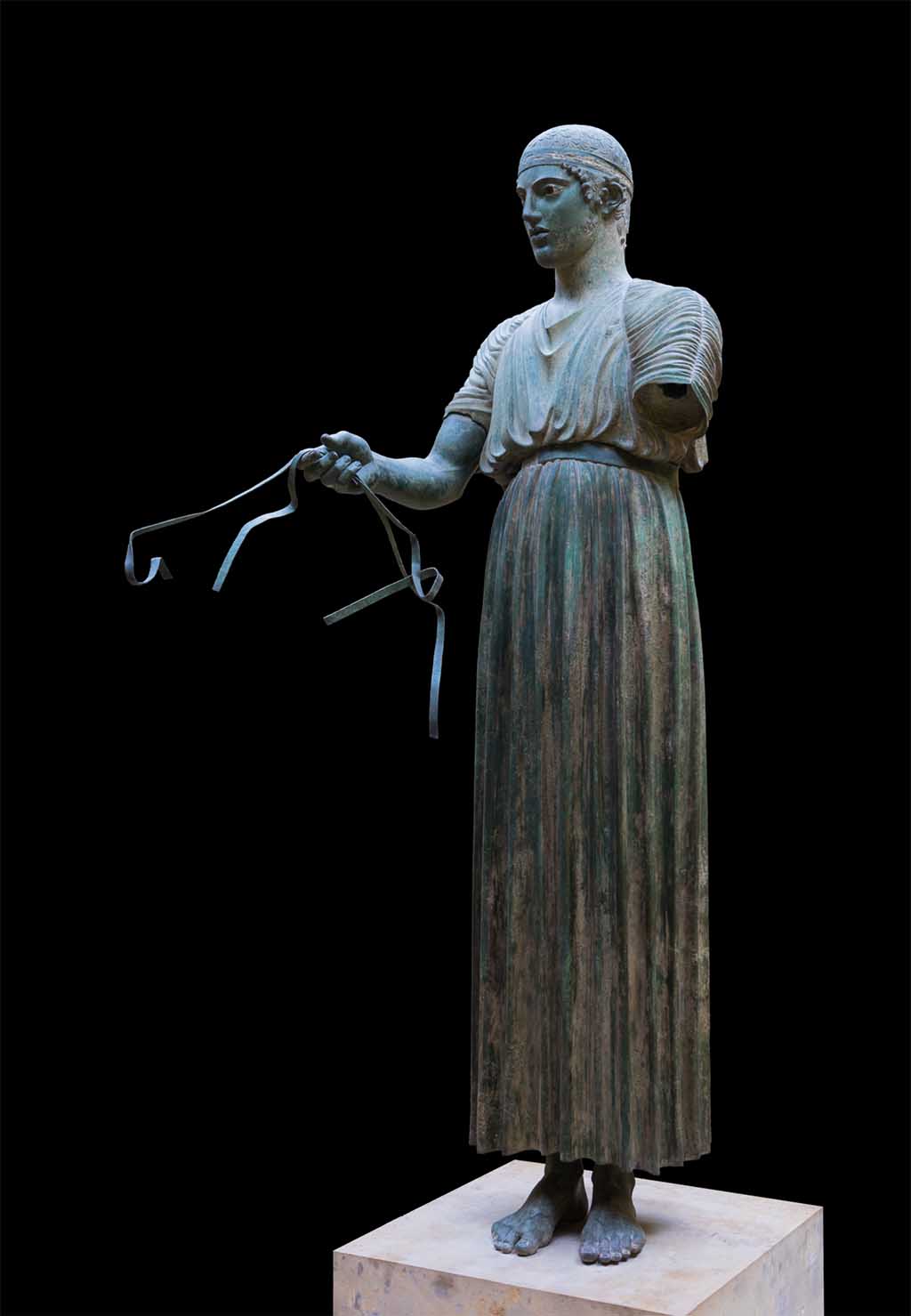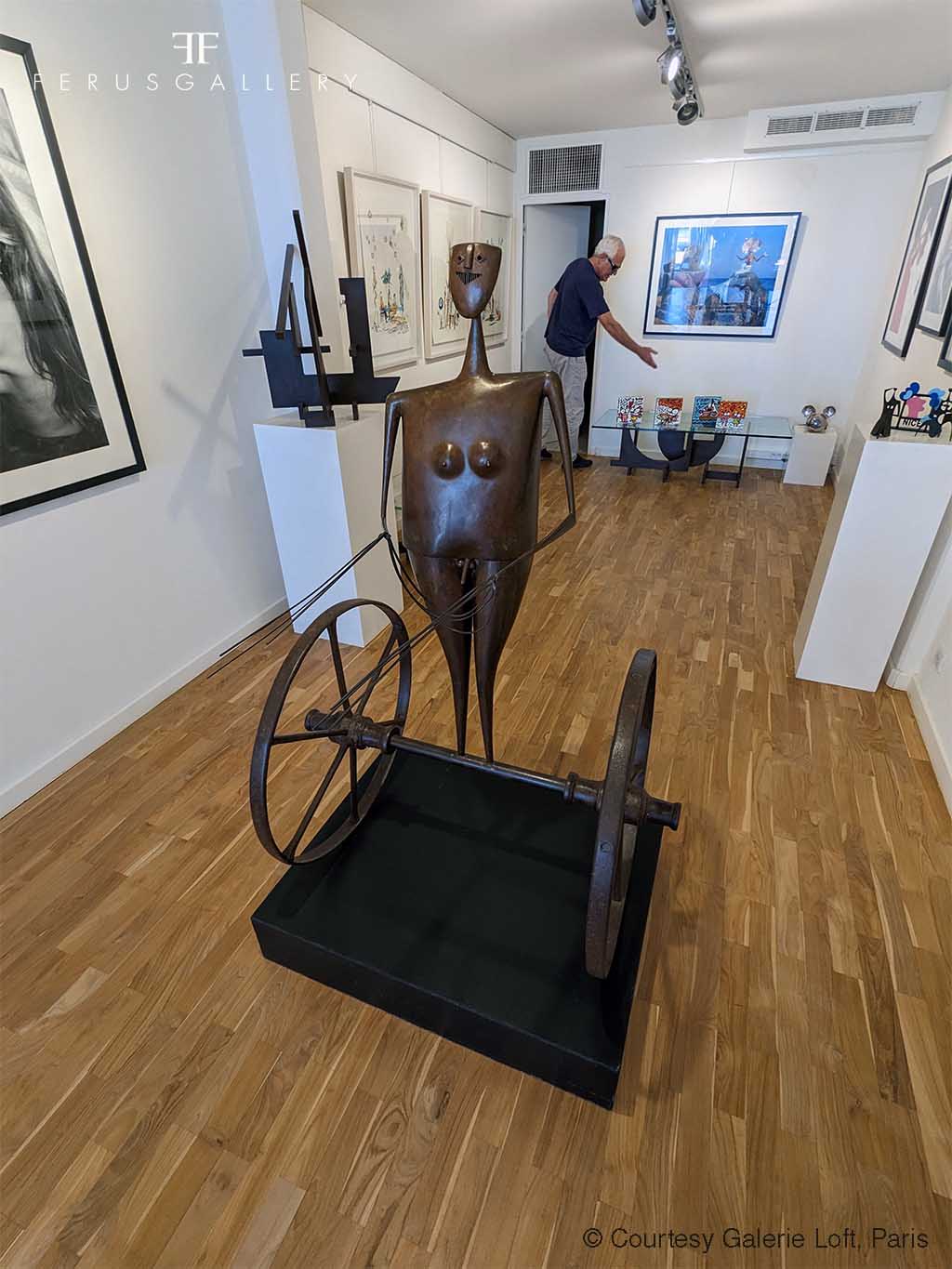We know the influence that the “Primary Arts” had on the work of the sculptor Philippe Hiquily. The artist was first a great collector of African art before building up a magnificent collection of Oceanian arts. But we know less about Philippe Hiquily, admirers of the Great Masters of Western sculpture and its founding fathers, the classical Greek sculptors.
With l’Aurige (the Charioteer), Philippe Hiquily makes a direct reference to “The Charioteer of Delphi” (5th century BC). One of the most famous and best preserved ancient statues to date (Delphi Archaeological Museum, Greece).
This unique piece in hammered brass features a charioteer welded onto a two-wheeled steel axle. The character with the expressive face, rare in Philippe Hiquily, with his hollow eyes, his nose and his toothy smile evokes with humor the Greek original.
The artist’s choice to depict the wheels of the chariot as well as the bisexuality of the driver with male and female organs, shows us another ancient inspiration for the work, that of Hermaphrodite, son of Aphrodite and Hermes possessing both male and female genitalia. Like almost all Greek deities, Hermaphrodite is distinguished by characteristic attributes, one of which is a chariot pulled by swans.
“L’Aurige” by Philippe Hiquily honors ancient Greek myths and particularly resonates with the ancient history of the Cap Ferrat peninsula. Even before the Romans left the remains found at La Turbie or Cimiez, the coastline of the Nice region was already known to the Greeks who had colonized Marseille. A few years ago, we discovered the remains of a 5th century Greek anchor in the nearby Baie des Fourmis in Beaulieu.
We would like to sincerely thank the Galerie Loft in Paris which today allows us to admire this exceptional work at the Ferus Gallery.













